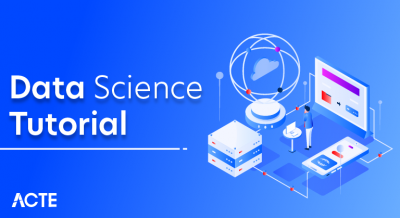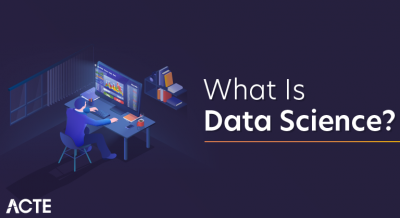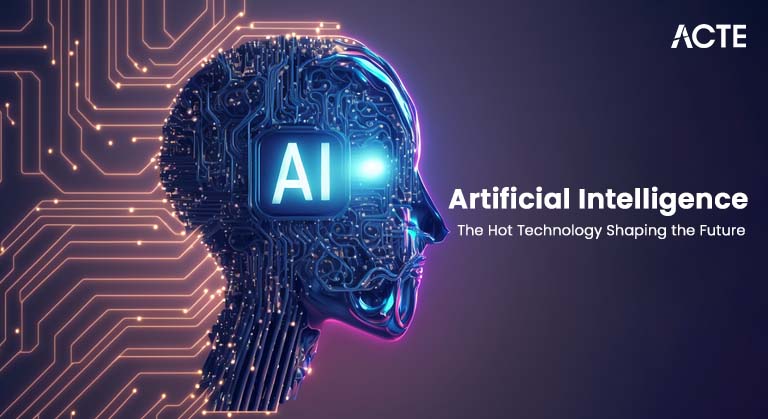
- What is Artificial Intelligence (AI)
- Evolution of AI Over the Years
- Categories: Narrow AI vs General AI
- AI Applications in Real Life
- AI in Business and Industries
- Role of Machine Learning in AI
- Natural Language Processing
- Computer Vision and Robotics
What is Artificial Intelligence (AI)
Artificial Intelligence (AI) refers to the simulation of human intelligence in machines that are programmed to think, learn, and problem-solve like humans. It encompasses a variety of technologies, including machine learning, natural language processing, and robotics, which enable machines to perform tasks that traditionally require human cognition.AI systems can analyze large volumes of data, recognize patterns, and make decisions or predictions based on that data, often at a speed and accuracy level far beyond human capabilities. Data Science training equips individuals with the skills to harness the power of AI, enabling them to work with vast datasets, understand machine learning algorithms, and apply data-driven insights for decision-making and predictions. AI is categorized into narrow or weak AI, which is designed for specific tasks like facial recognition or virtual assistants, and general or strong AI, which would have the ability to understand, learn, and apply knowledge across a wide range of tasks, similar to human intelligence. Over time, AI has made significant advancements in areas such as healthcare, finance, transportation, and customer service, transforming industries and creating new opportunities. However, it also raises important ethical and societal questions, including concerns about job displacement, privacy, and decision-making transparency. Despite these challenges, AI continues to evolve rapidly, holding the potential to revolutionize various sectors and change how we interact with technology and the world around us.
Would You Like to Know More About Data Science? Sign Up For Our Data Science Course Training Now!
Evolution of AI Over the Years
- Early Foundations (1950s-1960s): AI began as an academic pursuit in the mid-20th century, with pioneers like Alan Turing proposing the concept of machine intelligence. In 1956, the term “Artificial Intelligence” was coined during the Dartmouth Conference, marking the formal birth of AI as a field of study.
- Symbolic AI and Expert Systems (1970s-1980s): In the 1970s and 1980s, AI researchers focused on symbolic AI, using rules and logic to mimic human reasoning. Expert systems, mimicking human experts, were widely used in healthcare and finance. Learning how to build an artificial intelligence chatbot also emerged, enabling machines to simulate human conversation for customer support and automation.
- AI Winter (1990s): Despite initial excitement, AI research faced setbacks due to limited computational power and overly ambitious goals. This led to periods known as “AI winters,” where funding and interest in AI research diminished, stalling progress for a while.
The evolution of Artificial Intelligence (AI) has been marked by significant milestones, from its inception as a theoretical concept to its current real-world applications. Over the decades, advancements in computational power, data availability, and algorithm development have fueled rapid progress in AI, transforming industries and everyday life.
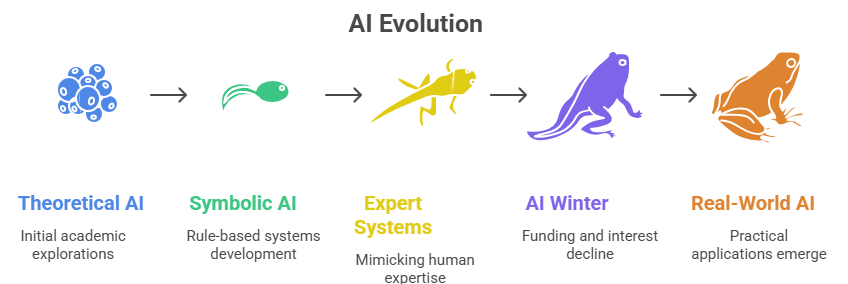
- Rise of Machine Learning (2000s): The 2000s saw the resurgence of AI, fueled by the growth of machine learning (ML), where computers learned from large datasets. With more powerful computers and access to big data, AI began achieving remarkable progress in image recognition, natural language processing, and robotics.
- Deep Learning Revolution (2010s): In the 2010s, deep learning, a subset of machine learning, revolutionized AI. By using neural networks with many layers, deep learning enabled breakthroughs in complex tasks like speech recognition, autonomous driving, and real-time language translation. achieving human-level performance in certain areas.
- AI in Everyday Life (2020s-Present): Today, AI is ubiquitous, powering everything from virtual assistants and recommendation algorithms to self-driving cars and personalized medicine. AI’s influence continues to grow, with ongoing research focusing on improving its ethical implications, transparency, and general intelligence.
Categories: Narrow AI vs General AI
Artificial Intelligence (AI) is commonly divided into two main categories: Narrow AI and General AI. Narrow AI, also known as Weak AI, refers to systems designed and trained to perform specific tasks, such as facial recognition, language translation, or recommendation systems. These AI systems excel in their predefined functions but cannot perform tasks outside their specialization or adapt to new, unforeseen problems. Examples of Narrow AI include virtual assistants like Siri or Alexa, which are highly efficient within their scope but cannot function beyond the tasks they are programmed for. On the other hand, General AI, also referred to as Strong AI, represents a more advanced and ambitious form of artificial intelligence. What is Artificial Intelligence It refers to the simulation of human intelligence processes by machines, enabling them to perform tasks like learning, reasoning, and problem-solving. This category envisions machines that possess the ability to understand, learn, and apply knowledge across a wide range of tasks, similar to human cognitive abilities. General AI would be capable of reasoning, problem-solving, and adapting to new situations with the flexibility and intelligence of a human. While Narrow AI is already a part of our daily lives, General AI remains a theoretical goal and is not yet realized. The progression from Narrow AI to General AI raises important questions about ethics, control, and the future of human-machine interaction.
Want to Pursue a Data Science Master’s Degree? Enroll For Data Science Masters Course Today!
AI Applications in Real Life
- Healthcare: AI is revolutionizing healthcare by enabling faster and more accurate diagnostics, personalized treatment plans, and drug discovery. Machine learning algorithms analyze medical data, such as images and patient records, to detect conditions like cancer, heart disease, and neurological disorders earlier and more reliably than ever before.
- Finance: In the financial sector, AI aids in fraud detection, risk assessment, and algorithmic trading. AI systems analyze vast financial data in real-time, spotting patterns to improve decisions for investors, banks, and insurers. A Data Science career path in this field focuses on data analysis, machine learning, and financial modeling.
- Transportation and Autonomous Vehicles: AI is at the core of self-driving technology, enabling vehicles to navigate and make decisions in real-time using sensors, cameras, and deep learning models. This has the potential to reduce traffic accidents, improve road safety, and enhance transportation efficiency.
- Customer Service: AI-powered chatbots and virtual assistants are increasingly being used in customer service to handle inquiries, resolve issues, and offer personalized recommendations. These systems provide 24/7 support, improving response times and customer satisfaction.
- Entertainment and Media: AI plays a crucial role in content recommendations on platforms like Netflix, YouTube, and Spotify. By analyzing user behavior and preferences, AI helps deliver personalized suggestions, ensuring that users discover new content tailored to their tastes.
- Smart Homes: AI is embedded in smart home devices like thermostats, lights, and security cameras. These devices use machine learning to adapt to user behavior, optimize energy usage, and enhance convenience by automating daily tasks, providing greater comfort and security in homes.
- Data-driven Decision Making: ML enables AI systems to make data-driven decisions by identifying patterns and trends in large datasets, providing more accurate insights for businesses, healthcare, and finance.
- Predictive Analytics: Machine Learning is used to predict future outcomes, such as customer behavior, market trends, or maintenance needs, by analyzing historical data. This helps organizations proactively address issues and capitalize on opportunities.
- Natural Language Processing (NLP): ML algorithms are essential for understanding and processing human language in AI applications like chatbots, virtual assistants, and sentiment analysis, enabling machines to interact with users in a more intuitive way. Expert systems in artificial intelligence also play a key role in these applications by mimicking human expertise to solve complex problems and provide informed responses.
- Image and Speech Recognition: ML powers image and speech recognition technologies, allowing AI to interpret and classify images, detect objects, and transcribe spoken language, with applications in security, healthcare, and entertainment.
- Automation and Efficiency: Machine Learning helps automate complex tasks like data entry, customer support, and fraud detection, streamlining processes and improving operational efficiency in various industries.
- Adaptive Learning and Personalization: ML algorithms allow AI systems to continuously learn and adapt to new information, improving personalization in services like online recommendations, advertising, and content delivery based on user preferences.
Artificial Intelligence (AI) has become an integral part of our everyday lives, revolutionizing numerous industries by improving efficiency, accuracy, and personalization. From healthcare to entertainment, AI applications are enhancing user experiences and transforming traditional practices. Here are some key areas where AI is making a significant impact:
AI in Business and Industries
Artificial Intelligence (AI) is increasingly becoming a game-changer in businesses and industries across the globe. By automating routine tasks, analyzing vast amounts of data, and providing actionable insights, AI is driving efficiency and innovation. In manufacturing, AI-powered systems enhance production processes, optimize supply chains, and predict maintenance needs, significantly reducing costs and downtime. In retail, AI is used to personalize customer experiences through recommendation algorithms, inventory management, and demand forecasting, enabling companies to offer more tailored services and improve profitability. In the finance sector, AI helps with fraud detection, algorithmic trading, and credit risk assessments, allowing for smarter decision-making and enhanced security. Data Science training enables professionals to understand and apply advanced analytical techniques, machine learning models, and data-driven strategies, enhancing their ability to leverage AI for more accurate predictions and improved financial operations. Moreover, AI has a significant role in customer service through chatbots and virtual assistants, providing round-the-clock support, improving response times, and enhancing customer satisfaction. Marketing also benefits from AI by offering targeted advertising and predictive analytics, helping companies understand consumer behavior and optimize campaigns. In healthcare, AI assists in diagnostics, drug discovery, and patient care management, leading to more accurate treatments and improved patient outcomes. Overall, AI’s integration into business and industry is transforming traditional practices, creating new opportunities, and giving companies a competitive edge in an increasingly data-driven world.
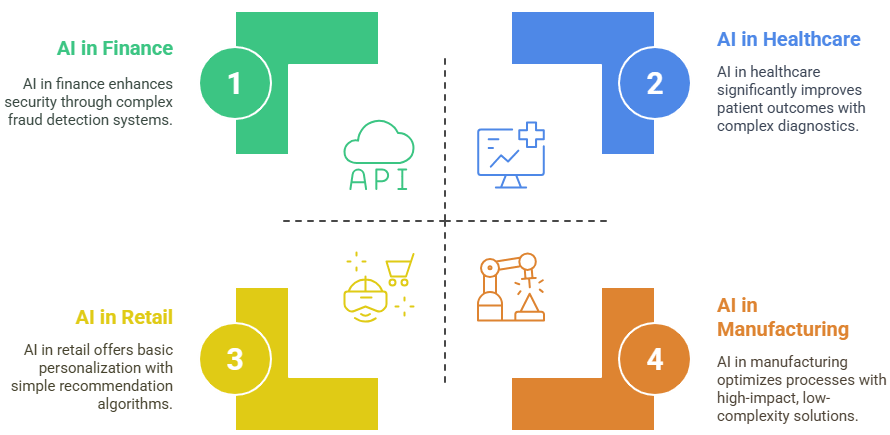
Role of Machine Learning in AI
Machine Learning (ML) is a crucial subset of Artificial Intelligence (AI), playing a central role in enabling machines to learn from data, identify patterns, and make decisions with minimal human intervention. Unlike traditional programming, where explicit instructions are provided for each task, ML algorithms allow systems to improve their performance over time based on the data they process. Here are six key roles Machine Learning plays in AI:
Natural Language Processing (NLP)
Natural Language Processing (NLP) is a critical field within Artificial Intelligence (AI) focused on enabling machines to understand, interpret, and generate human language in a way that is both meaningful and useful. NLP combines linguistics and machine learning to bridge the gap between human communication and computer understanding. It involves tasks such as speech recognition, sentiment analysis, language translation, and text generation.By processing vast amounts of unstructured text or speech, NLP algorithms can identify patterns, relationships, and context, making it possible for machines to comprehend and respond to human language. Python project ideas for beginners can include building simple NLP applications, such as a chatbot or sentiment analysis tool, to help practice and strengthen skills in natural language processing. For example, NLP powers virtual assistants like Siri and Alexa, allowing them to interpret voice commands and provide relevant responses. It also underpins automatic translation systems such as Google Translate, helping break down language barriers in real time. In customer service, NLP is used in chatbots to provide instant assistance and resolve queries efficiently. Furthermore, NLP plays a significant role in content generation, summarization, and sentiment analysis, helping businesses analyze consumer opinions or feedback. Despite its advancements, NLP still faces challenges related to understanding nuances, slang, or ambiguous meanings in human language. However, ongoing research continues to improve its capabilities, making NLP a transformative technology in AI and human-computer interaction.
Go Through These Data Science Interview Questions & Answer to Excel in Your Upcoming Interview.
Computer Vision and Robotics
Computer Vision and Robotics are two closely intertwined fields within Artificial Intelligence (AI) that work together to enable machines to perceive, understand, and interact with the physical world. Computer Vision focuses on enabling machines to interpret and process visual information from the environment, much like humans use their eyes to understand the world around them. Through the use of cameras and sensors, computer vision systems can identify objects, recognize faces, track movement, and even interpret complex scenes in real-time. Robotics, on the other hand, involves the design and creation of robots machines capable of performing tasks autonomously or semi-autonomously. When integrated, computer vision enhances the capabilities of robots by allowing them to “see” their surroundings and make informed decisions based on visual data. This combination is revolutionizing industries such as manufacturing, healthcare, and logistics. Enroll in our Data Science training plays a crucial role in this transformation, providing professionals with the expertise to analyze complex datasets, develop predictive models, and optimize processes, driving innovation and efficiency across these sectors. For instance, robots equipped with computer vision can perform precise tasks like assembly, surgery, or warehouse management with incredible accuracy. In autonomous vehicles, computer vision allows robots to navigate roads, detect obstacles, and make decisions in real-time. Despite impressive advancements, challenges still exist in improving vision accuracy in varied environments and enhancing robotic dexterity. However, the synergy between computer vision and robotics continues to evolve, opening up exciting possibilities for automation and intelligent systems.


